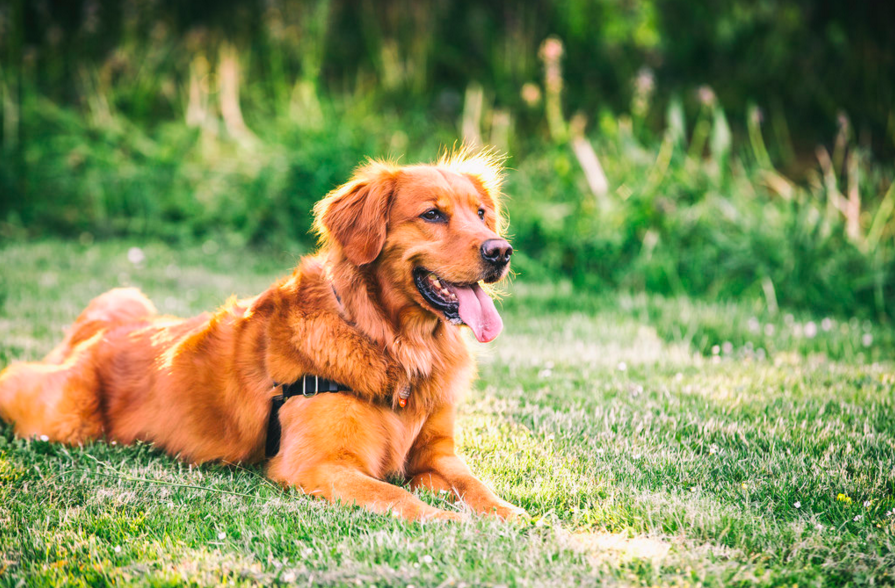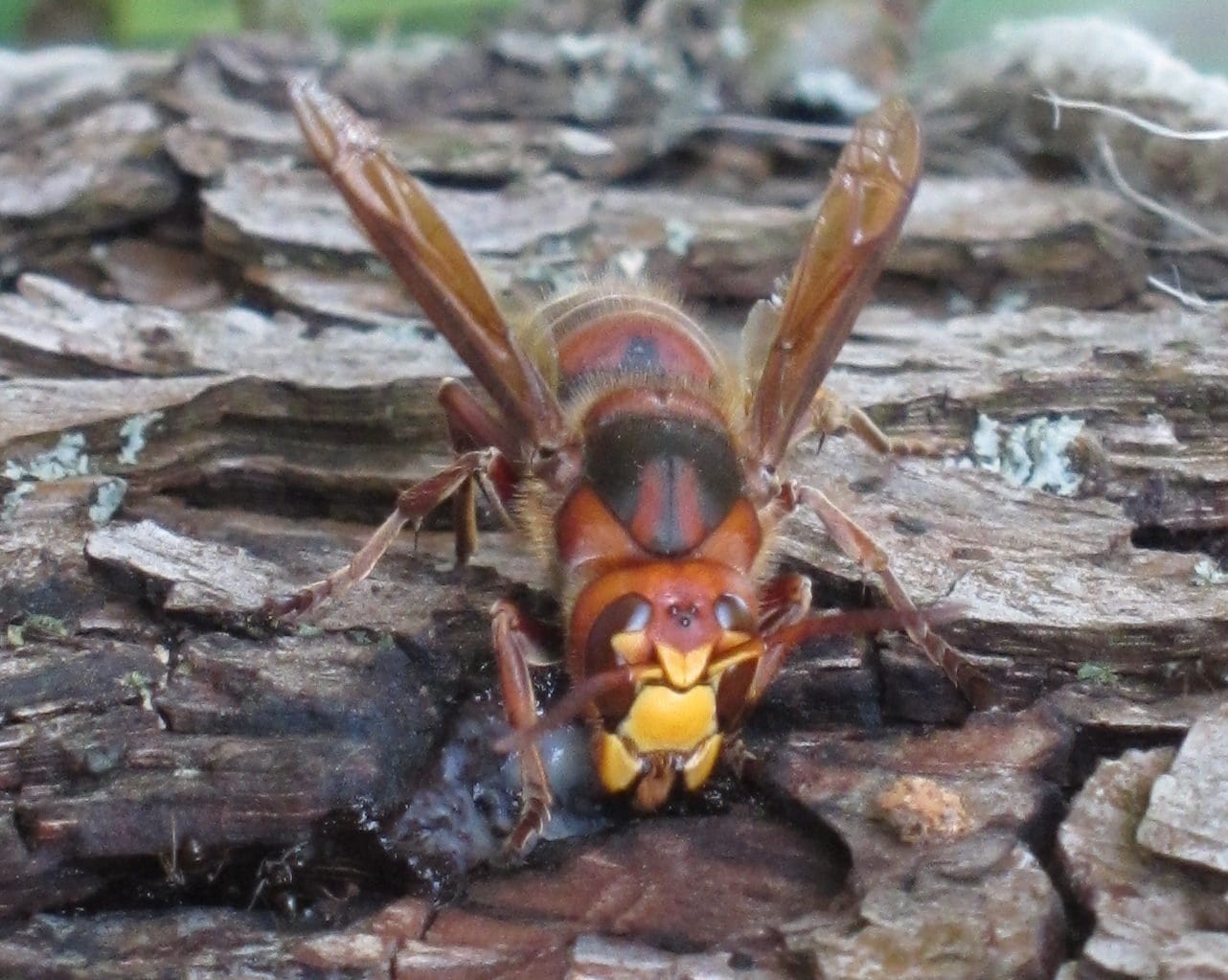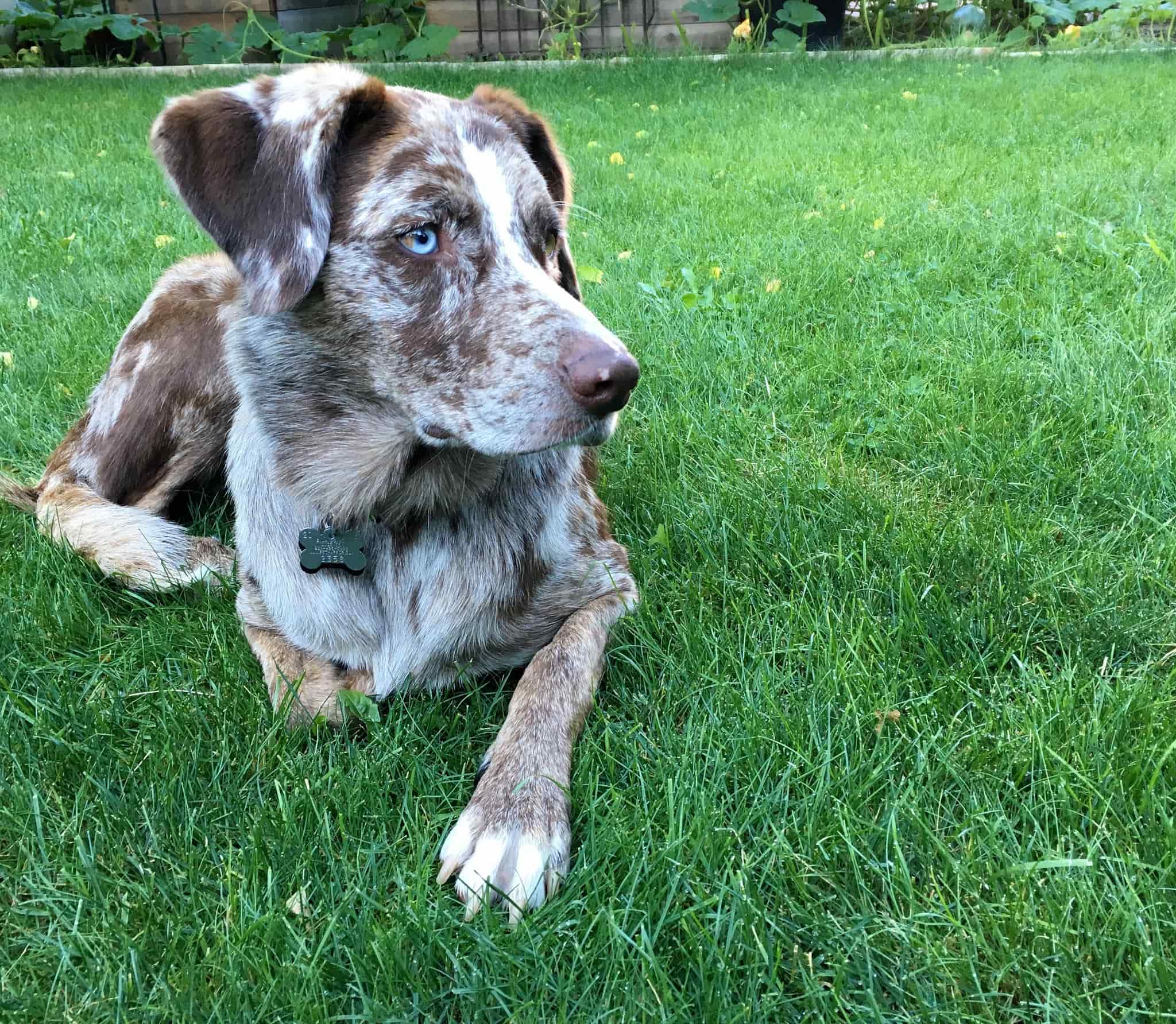What to do if your dog is stung by a hornet

As summertime moves in, so do stinging insects and pests.
Unfortunately, they usually end up building nests around our homes and invading our backyards.
Hornets are an especially serious problem if they decide your house is the perfect place to set up shop.
This not only limits the amount of recreational time your dogs will be able to spend outside, but it also means you need to prepare for the event in which your dog is stung.
Take the necessary precautions to prevent hornets from becoming a threat to your pup!
If you’re short on time, keep these guidelines in mind: If your dog gets stung, look for a stinger and clean the wound with hydrogen peroxide. If you see signs of infection or a more serious condition, take them to the vet immediately.
Don’t let your home become a hornet hang-out
Hornets cannot survive the winter season, but as soon as temperatures start to rise toward the end of spring and start of summer, they begin to repopulate.
Like most insects, hornets survive best in areas where they can easily protect their nest while also foraging for food. Summer happens to be the time when food is most readily available; we consume sodas, ice cream, snow cones and other sugary sweets around this time of year.
Naturally, hornets will build their nest close to garages and parts of the home where they can gain access to trash cans. Do yourself a favor and don’t allow these bugs to turn your home into a buffet: Keep food inside and be sure to rinse off any soda spills from your patio, driveway and yard.
Always supervise your dog in summer, even in your own yard
It’s easy to let your guard down when it comes to your pets playing in their designated outdoor space. After all, it’s meant to be a safe and happy place for them to explore, right? Well, a sting or a bite can happen within a matter of seconds.
If there’s one hornet around, there are probably several more somewhere nearby. One irritated pest can quickly become a full-blown attack, and a swarm of painful stingers can be fatal for your dog. Keep a close eye on your dog when they’re outside. If one hornet turns into several it could be too late by the time you realize what’s happening.
My dog has been stung. What should I do?
The moment your dog is stung can be shocking, and scary if you’ve never experienced it before. Take a deep breath, remain calm and assess the situation, make sure it is safe for you to approach before you try to help your dog.
Most of the times our pets are stung in the nose or mouth while they’re exploring, and sometimes sniffing things that they shouldn’t be. Is your dog pawing at their face, crying, whining or showing serious signs of discomfort? That will help you to pinpoint the location where they’ve been stung. Normal effects are tenderness and swelling, which can range from mild to severe.
Hornets don’t usually lose their stingers, but you should still check your dog’s entire body just in case one happens to be stuck under their skin. You may need to restrain your pet to remove the stinger, but if you can’t, have a veterinarian do it for you. Leaving it underneath the skin can create an infection and worsen your dog’s symptoms.
Most of the time, dogs experience some swelling and discomfort, which is normal. If your dog suddenly has trouble breathing, has very extreme or severe swelling or appears weak and lethargic, however, this is a sign of anaphylactic shock and needs to be treated by a veterinarian immediately.

Regularly check for hornets nests around your property; especially under overhangs. Image: Acid Pix
Treat the wound as quickly as possible
Once you’re certain there are no foreign bodies present, you can begin cleaning the wound. Use gentle agents such as hydrogen peroxide to sanitize and prevent infection. The would doesn’t need to be covered or bandaged.
Your pet can take a Benadryl in the amount of one milligram per pound, and your dog may be a bit tired or drowsy afterward, according to Jessica Vogelsang, DVM.
You can also use an icepack, but some dogs don’t particularly enjoy the cold sensation on their skin so you can forgo this treatment if your pet won’t allow it.
Animals often act out when they’re in pain, and your dog might bite, bark or growl at you because they don’t want to be touched. If it’s safe and doesn’t obstruct the area that needs examination, you can place a muzzle over their snout or wrap a leash around it; the leash will look unpleasant, but this is a trick that’s used by animal rescuers to help trap animals who show aggression out of fear.
Remember, your dog won’t understand that you’re just trying to help, so don’t get angry or punish them if they behave angrily toward you. Hornet stings hurt and injured animals just want to be left alone, even though we can’t do that.
When should I go to the vet?
Even if the swelling goes away, there is always a chance of the wound becoming infected. If you notice the site of the sting becoming red, inflamed, warm or exuding pus, your dog will need antibiotics to clear up the problem.
Failure to treat the area could cause the infection to spread to throughout the rest of their body, causing them to become very ill. On average, dogs experience about 48 hours of swelling and discomfort; however, some canines fair much worse than others. If your dog loses consciousness or has swelling in the tongue and throat that prevents them from breathing normally, rush to the vet immediately. These are signs of anaphylactic shock and your dog can die as a result, so do not wait for these symptoms to worsen or get better.

While it’s unlikely for a dog to be stung without provoking a hornet or disturbing a hornet’s nest, you should always keep an eye on them while they’re outside. Image: Alan Levine
The best treatment is prevention
Making sure your home isn’t a safe haven for hornets is the best way to make sure your dog won’t get stung. If you’re used to keeping garbage cans outside, cover them up with a tarp or bring them into your garage. If you already have hornet nests in your yard, hire a professional who can take care of the issue for you. Don’t risk your safety!
Dogs are curious creatures and may often find themselves in unexpected situations because of their nose, so getting stung by a hornet is not uncommon. Initially, the situation might feel dire because your dog is going to swell in the area that’s been stung and it’s not uncommon for their face to balloon up; this is a natural reaction for canines.
As a kennel technician, I have had to break up fights between dogs, and hornet stings swell up in a similar manner to bites and puncture wounds. It’s definitely painful and uncomfortable, but all you can do is keep it clear of infection and try to reduce the inflammation response to keep the wound from becoming too irritated.
Plan ahead with first-aid supplies
Get supplies before a sting happens. It’s better to be safe than sorry. I suggest purchasing a nebulizer and keeping it on hand if you live out in the country or away from large metropolitan areas. You might not have a veterinarian nearby, and time is of the essence when your dog’s airway starts to close. A nebulizer can help to temporarily open that airway back up for a short period of time while you drive your pet to the nearest veterinarian or wait for an emergency team to come to you.
Keep a first-aid kit on hand with plenty of Benadryl, gauze, tweezers and hydrogen peroxide; this kit should remain separate from the one that you use for your family and remain specific to the pets in your household. You should never use the same tweezers or extracting tools that you use for your pets on your kids or yourself for hygiene purposes.
Even if your dog is never stung or bitten in the entire time they’re with your family, it’s best not to be caught off guard. Summer comes every year, so be prepared!
-Chloe Weaver
Chloe Weaver is a kennel technician and long-time dog owner. She currently has a 4-year-old Labradane and a 7-year-old Staffordshire mix. As a lifelong animal lover, she has volunteered for several rescues and helped to foster dogs and cats.
Feature image: Thomas Hawk
